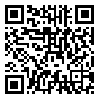Volume 1, Issue 4 (Autumn 2018)
Func Disabil J 2018, 1(4): 28-35 |
Back to browse issues page
Download citation:
BibTeX | RIS | EndNote | Medlars | ProCite | Reference Manager | RefWorks
Send citation to:



BibTeX | RIS | EndNote | Medlars | ProCite | Reference Manager | RefWorks
Send citation to:
Zarei A, Riazi A, Heravian Shandiz J, Farzaneh A. Impact of Using Tablet Computer and Smart Phone on Vision Performance In a Group of Visually Impaired Children . Func Disabil J 2018; 1 (4) :28-35
URL: http://fdj.iums.ac.ir/article-1-69-en.html
URL: http://fdj.iums.ac.ir/article-1-69-en.html
1- MSc, Department of Optometry, School of Paramedical Sciences, Mashhad University of Medical Sciences, Mashhad, Iran
2- PhD, Senior Lecturer, Department of Ophthalmology, School of Medicine, Baqiyatallah University of Medical Sciences, Tehran, Iran. ,abbas.riazi@gmail.com
3- Professor, Department of Optometry, School of Paramedical Sciences, Mashhad University of Medical Sciences, Mashhad, Iran
4- PhD Candidate, Department of Optometry, Iran University of Medical Sciences, Tehran, Iran
2- PhD, Senior Lecturer, Department of Ophthalmology, School of Medicine, Baqiyatallah University of Medical Sciences, Tehran, Iran. ,
3- Professor, Department of Optometry, School of Paramedical Sciences, Mashhad University of Medical Sciences, Mashhad, Iran
4- PhD Candidate, Department of Optometry, Iran University of Medical Sciences, Tehran, Iran
Abstract: (2477 Views)
Background & Objectives: To assess the effect of using tablets and smartphones on visual acuity and vision-related performance in a population of visually impaired children.
Methods: 24 children between the ages 4 to 13 years with visual acuity between 20/80 (0.6 Log Mar) to light perception participated in this study. The case group comprised children who scheduled to work with a tablet or smartphone for 2 hours a day for 6 months. The control group received nothing. Near and far vision as well as refraction were measured. Children of the two groups were asked to paint and the duration of painting was recorded. A questionnaire was designed to assess the quality of life the of children. All measurements were repeated 6 months later in both groups. There was no significant difference in vision between the two groups before using a tablet. Parents were also asked to explain any changes that occured in the behaviors of their children.
Results: Distant vision in the tablet group was significantly different from the control group (P=0.04) which indicates improvement in visual acuity of the case group with about 0.20 Log Mar compared to the control group. There was 0.20 log Mar better vision in the tablet group in comparison with the control group (P=0.04). Results from the questionnaire showed that in the tablet group, the score was about 14.04 units better than the control group. The time consumption for painting was the same in both groups after 6 months. There was no significant difference in near acuity and refractive errors. Interviews with parents showed improvement in the tablet group in the area of navigation, mobility as well as objects’ recognition. Parents stated that their child performed better in the environment. They had less accidents with objects and individuals. They were more comfortable in walking and using stairs.
Conclusion: using tablets and smart phones by visually impaired children can improve distant vision and increase their functionality in performing daily life activities.
Methods: 24 children between the ages 4 to 13 years with visual acuity between 20/80 (0.6 Log Mar) to light perception participated in this study. The case group comprised children who scheduled to work with a tablet or smartphone for 2 hours a day for 6 months. The control group received nothing. Near and far vision as well as refraction were measured. Children of the two groups were asked to paint and the duration of painting was recorded. A questionnaire was designed to assess the quality of life the of children. All measurements were repeated 6 months later in both groups. There was no significant difference in vision between the two groups before using a tablet. Parents were also asked to explain any changes that occured in the behaviors of their children.
Results: Distant vision in the tablet group was significantly different from the control group (P=0.04) which indicates improvement in visual acuity of the case group with about 0.20 Log Mar compared to the control group. There was 0.20 log Mar better vision in the tablet group in comparison with the control group (P=0.04). Results from the questionnaire showed that in the tablet group, the score was about 14.04 units better than the control group. The time consumption for painting was the same in both groups after 6 months. There was no significant difference in near acuity and refractive errors. Interviews with parents showed improvement in the tablet group in the area of navigation, mobility as well as objects’ recognition. Parents stated that their child performed better in the environment. They had less accidents with objects and individuals. They were more comfortable in walking and using stairs.
Conclusion: using tablets and smart phones by visually impaired children can improve distant vision and increase their functionality in performing daily life activities.
Type of Study: Research |
Subject:
Optometry
Received: 2018/08/13 | Accepted: 2018/09/30 | Published: 2018/12/15
Received: 2018/08/13 | Accepted: 2018/09/30 | Published: 2018/12/15






